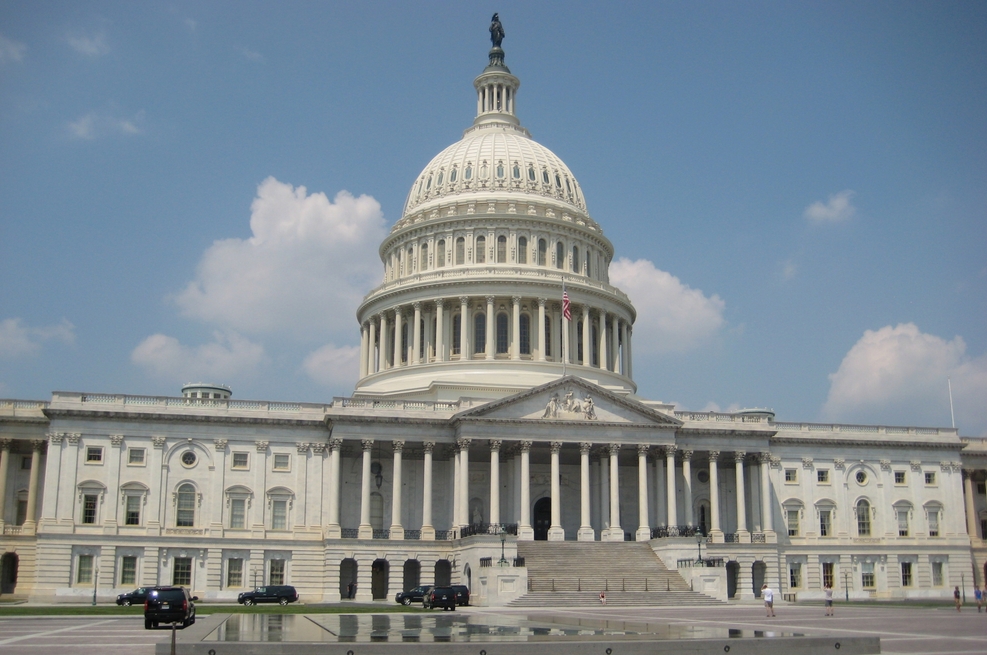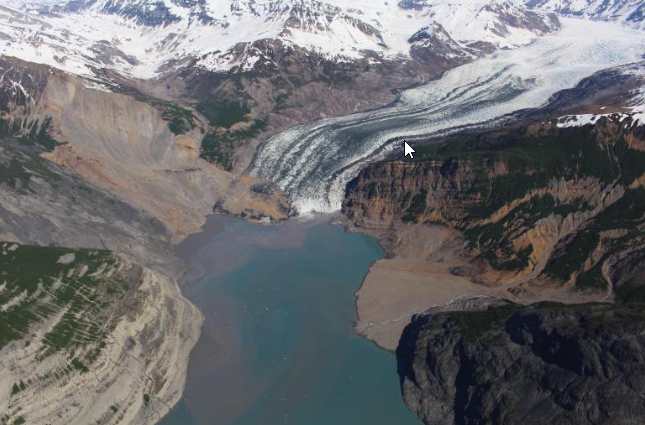Washington, DC – Wednesday, the U.S. Senate Committee on Commerce, Science, and Transportation favorably reported U.S. Senator Lisa Murkowski’s (R-AK) National Landslide Preparedness Reauthorization Act on a strong bipartisan basis. Murkowski’s bill, cosponsored by U.S. Senator Maria Cantwell (D-WA), would reauthorize current law for ten years, through Fiscal Year (FY) 2034, and provide the U.S. Geological Survey (USGS) with additional authority and resources to help monitor and prepare high-risk areas for landslides.
The committee also advanced bipartisan legislation to reauthorize the National Earthquake Hazards Reduction Program (NEHRP) through FY 2028. Led by Senator Alex Padilla (D-CA) and cosponsored by Murkowski, the bill authorizes a total of $175.4 million per year from FY 2024-2028 across the four federal agencies responsible for long-term earthquake risk reduction under NEHRP: the Federal Emergency Management Agency (FEMA), the National Institute of Standards and Technology (NIST), the National Science Foundation (NSF), and USGS.
“Late last year, six Alaskans were killed in the Wrangell landslide. Prior to that, landslides killed Alaskans in Sitka and in Haines. These once-in-a-generation disasters are occurring more and more often, and lesser landslides, like the one that affected Juneau last week, are becoming routine,” Murkowski said. “We need to do everything we can to ensure that communities in Alaska and across the nation are prepared to predict, monitor, and respond to landslides. Senator Cantwell and I are leading this reauthorization to update our federal programs and equip local communities with the resources they need to save lives.”
“Alaska faces significant earthquake risks as the most seismically active state – our communities must be prepared,” Murkowski continued. “The National Earthquake Hazards Reduction Program Reauthorization Act provides crucial funding to federal agencies for research, development, and implementation of earthquake safety measures.”
“Following the tragic landslide in Wrangell in November 2023, the reauthorization of the National Landslide Preparedness Act would provide our community with essential resources for landslide hazard assessment and mitigation,” said Mason Villarma, Borough Manager, City and Borough of Wrangell. “By enhancing advisory systems and improving emergency response strategies, this legislation would strengthen Wrangell’s resilience and safety. We thank Senator Murkowski for her unwavering advocacy of this critical piece of legislation.”
“Landslides are a major concern in Alaska. UAF research can help communities throughout the state prepare for future events. Thank you to Senator Murkowski for her leadership on reauthorizing and increasing funding for the nation’s primary landslides hazards program. UAF is grateful for her efforts to ensure Alaska is a priority in this legislation and we look forward to partnering with the appropriate federal agencies to help protect life and property in Alaska from future landslides,” said Dan White, University of Alaska Fairbanks Chancellor
“We are so very grateful to Senator Murkowski for her efforts to support Alaskan communities as they face the challenge of increased natural hazards like landslides and floods,” said Arleigh Reynolds, Executive Director of the Sitka Sound Science Center. “Through her efforts, the US Geological Service, the US Forrest Service, the National Weather Service, Alaskan state agencies, tribal organizations, non-profit organizations, and communities have come together in a working group to share our knowledge and best practices. As rapid environmental change drives the enhanced frequency and severity of landsides in high-latitude regions, this collaborative effort will ensure communities have the most up to date information on how to prepare for, and protect themselves from, the devastating impacts on life and infrastructure. Senator Murkowski understands the needs of our rural residents and she sees how our collaborations across agencies, organizations, and communities can be a model for the nation.”
“New language for the National Earthquake Hazards Reduction Program will pave the way for Alaska to develop an early warning system for earthquakes, joining what already exists along the west coast of the lower 48,” said Michael West, State Seismologist for the Alaska Earthquake Center. “While the National Landslide Preparedness Act will help Alaska come to terms with landslides in a changing climate. Both programs ensure collaboration between federal, state, and university partners to ensure the maximum benefit for Alaskans.”
Background for National Landslide Preparedness Reauthorization Act: The National Landslide Preparedness Act, enacted by Congress in early 2021, directed USGS’ Hazards Reduction Program to develop a national strategy for landslides, a national landslide hazards database, and a debris flow early warning system. The measure also created the Interagency Coordinating Committee on Landslide Hazards, a federal advisory committee on landslides, and two grant programs.
In addition to her authorizing legislation, Murkowski, a senior appropriator, has secured more than $14 million in federal funding over the past three years for landslides-related work in Alaska, including for Barry Arm and Prince William Sound.
In the FY 2025 Interior Appropriations bill reported from committee last week, Murkowski added $1.5 million for USGS’ Prince William Sound and Southeast landslide program, a $1 million increase from last year, and language that supports ongoing warning work for the region. She also included $1 million for the deployment, operation, and maintenance of landslide detection and monitoring systems in high-risk areas.
Murkowski’s bill authorizes $40 million per year for USGS to landslides work, with at least $15 million per year made available for the purchase and deployment of landslide early warning systems in high-risk areas, many of which are in Alaska.
S. 3788, the National Landslide Preparedness Reauthorization Act, and S. 4802, the Department of the Interior, Environment, and Related Agencies Appropriations Act, 2025, will both head to the Senate Legislative Calendar to await floor consideration by the full chamber.
Background for National Earthquake Hazards Reduction Program Reauthorization Act: The measure would authorize $10.6 million for FEMA, $5.9 million for NIST, $58 million for NSF, and $100.9 million for USGS per year from FY 2024-2028. This funding would support research, development and implementation activities related to earthquake safety and risk reduction.
Changes from the previous NEHRP reauthorization include:
- Directing state and local entities to inventory high risk buildings and structures, expanding seismic events to include earthquake-caused tsunamis;
- Providing more technical assistance to Tribal governments; and
- Improving mitigation for earthquake-connected hazards.
Alaska faces substantial earthquake risks as the most seismically-active state—and all Alaskans live with earthquake hazards. According to the Alaska Earthquake Center, over 220,000 earthquakes were reported in Alaska over the last five years, with 26 earthquakes having a magnitude of 6.0 or greater. Notably, the most powerful earthquake to strike North America was the 9.2 1964 Good Friday Earthquake in 1964, which lasted nearly five minutes and left 118 dead, and thousands more without shelter.
The bill is endorsed by the American Society of Civil Engineers (ASCE), BuildStrong America, Earthquake Engineering Research Institute (EERI), International Code Council (ICC), the National Council of Structural Engineers Associations (NCSEA), the National Institute of Building Sciences (NIBS), Seismological Society of America, and the Structural Engineers Association of California (SEAOC).
S. 3606, The National Earthquake Hazards Reduction Program Reauthorization Act, will now go to the Senate Legislative Calendar to await floor consideration by the full chamber.
[content id=”79272″]








